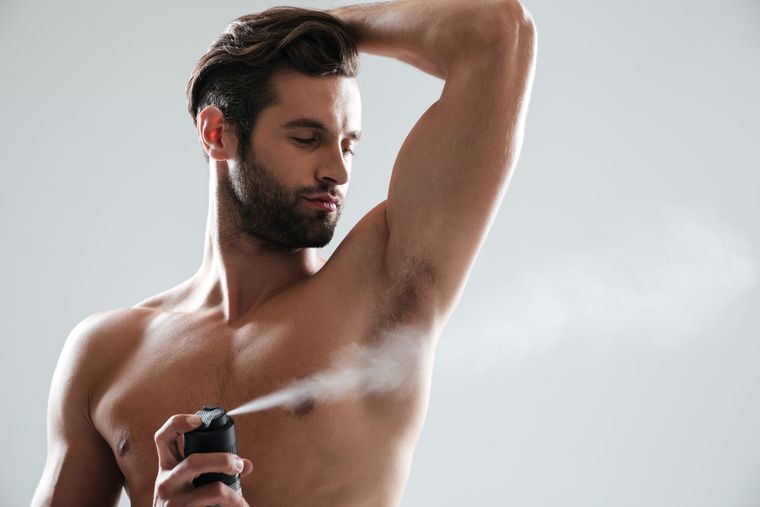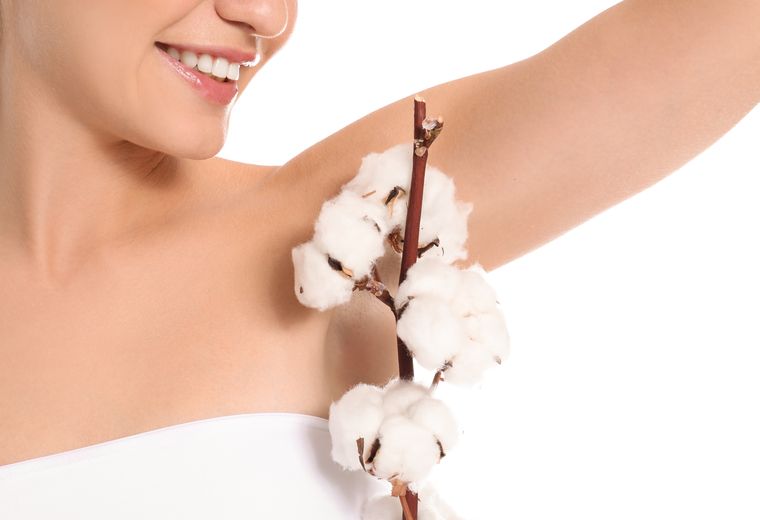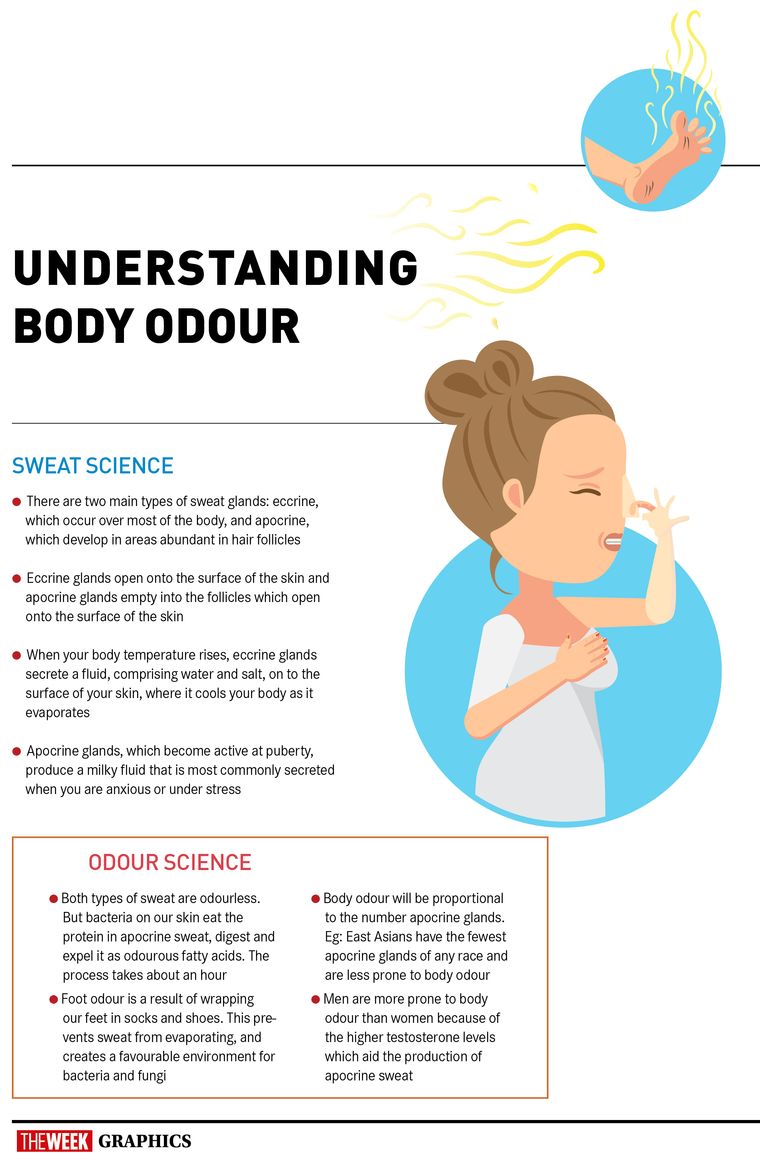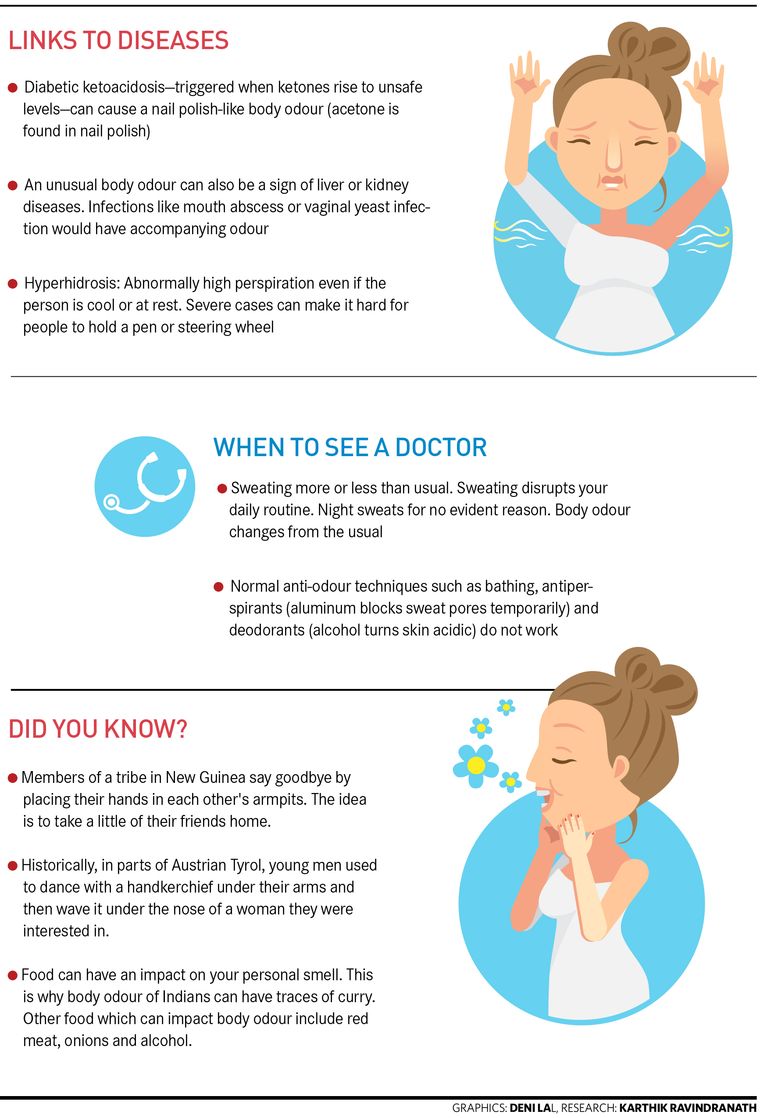I have never had an interviewee sniff my armpit before, but I suppose there is a first time for everything. “Really, it is fine. We can do it now. You just need to pull your top up,”coaxes the capable-looking Belgian microbiologist Dr Christopher Callewaert, while making a discreet shirt-lifting gesture.
We are in the serene canalside common room where Callewaert, 32, and his fellow academics at Ghent University’s renowned Faculty of Bioscience Engineering come to relax with a Mars bar and watch the swans glide by. Or, if the piano by the window is anything to go by, to knock out a sonata or two.
Bioscience is a bewilderingly broad church, comprising investigations into pretty much everything that is alive, and Ghent University is an international frontrunner when it comes to parlaying its research into advances with the potential to change the way we live. Callewaert nods to a colleague a few tables away who is “converting urine back into drinkable water”on behalf of the European Space Agency. Right now, disappointingly, he is eating a sandwich.
Analysing body odour is Callewaert’s thing and he is very good at it, to the point of being able to identify different types of human scent straight off the bat, which is to say, straight off the pit. The axillae, to give armpits their scientific name, are the sweaty engine rooms of pong aboard the good ship Homo sapiens.
“There is fishy; there is faecal-like; there is oniony; there is sour; there is even a bit floral, a bit soapy even,”says Callewaert, managing to sound measured and professional, as if he is itemising varieties of vinyl flooring. “Those last two are the good ones. Then there is what I would describe as a boar-like animal odour, which is pungent and grasping. It catches the back of your throat. There is a cannabis-like smell as well and a sulphurous one.”
I am suddenly bashful, concerned about the effect my half-hour, polyester-clad power walk from Ghent’s central station may have had on my underarm. So, rather than submit to Callewaert’s impromptu sniff test, I ask if I might be referred to one of his famed odour panels instead.
The odour panel, as Callewaert reminds me, comprises “eight specially trained people—four male, four female—who are served anonymised samples of underarm odour, which they grade based on intensity and hedonic value. In other words, whether they smell good or not.”
There are plenty of machines that can analyse a sample for the presence of a given substance—gas chromatography-mass spectrometry is the standard laboratory method. “But none of them can say if a sample stinks, which is what I need to know,”says Callewaert.
As it happens, the latest round of Callewaert’s olfactory X Factor is due to take place tomorrow, which is why I spend the rest of my time in Ghent with a cotton pad taped under my left armpit. After a few hours, the damp swab is dropped with tweezers into a glass “goblet”(in reality, the kind of jar you might use to preserve chutney) and sealed for the odour panel’s delectation... or disgust.
This suits me just fine. If my armpits reek of stoned, rotting kipper, I would rather find out via email.
As the younger brother of two sisters, one of whom died in a car accident when he was ten, it was expected that Callewaert would take over the family farming business in his native Flanders, “growing lettuces and tomatoes in a greenhouse”. Accordingly, his parents enrolled him at a secondary school that specialised in agriculture and biotechnology.
Young Callewaert soon decided that he “did not like getting up early to dig in the dirt”, but he was nevertheless fascinated by the processes of life. Later, as he neared the end of his undergraduate degree in applied biosciences at Ghent, there came a (metaphorical) roll in the hay that led to his first breakthrough.
“It is an embarrassing story, but I got body odour after a one-night stand when I was a 21-year-old student here,”he says. “Before that night, I had never had any trouble with odour whatsoever. Then suddenly, I stank, without any other change to my routine.”
Was it faecal, I ask, trying to sound detached and scientific. Fishy?
“Part sour and a bit dirty,”says Callewaert, looking slightly haunted. “Even today, I would be able to pick it out from among thousands, that dirty bacterial smell.”
Despite fastidious washing and copious deodorant use, things got so bad that Callewaert became convinced that he “must have some kind of disease”. Still, his doctor gave him a clean bill of health.
Perplexed, Callewaert began to speculate that the night of passion had done something profound to the make-up of his microbiome, the community of bacterial flora that live on the body, specifically in the armpit, which Callewaert refers to as a microbiological “piece of mystery”that is home to more bacteria than there are humans on Earth.
Those bacteria are sustained by the “warm, moist and nutritionally rich conditions”of the armpit, where a wide range of lipids, salts and proteins are secreted through a high concentration of sweat glands. Callewaert is fond of quoting the New Zealand microbiologist Mary Marples, who compared the ecology of the skin to that of our planet: “The forearm is the desert, the scalps are the cool woods and the armpit is the tropical rainforest.”
Callewaert began to think that “if a transfer is possible in a bad way, it must also be possible in a good way. If you can contract bad body odour via bacteria, then you must also be able to contract good odour, right?”
He pitched the idea—a little more than a hunch at the time—to his professors, who deemed it a winner. “Then I applied for a couple of grants from the Belgian government, and I got them,”he says. “That is how the whole story started.”
The first task for Callewaert and his small team at Ghent University’s Laboratory of Microbial Ecology and Technology was to recruit a 53-strong sample of armpit owners and try to establish whether or not there was a discernible difference between the microbiome of those whom the odour panel found to be fresh as daisies and those who smelt like they were pushing them up. To identify possible patterns and correlations, subjects were asked for extensive information about their daily lives.
Conveniently, Callewaert’s bout of curiosity corresponded with the coming of nifty, next-generation DNA sequencing technology that could break down molecular structures with unprecedented accuracy and sophistication. He describes this development in terms that suggest it was the laboratory equivalent of Bob Dylan going electric.
“Before that, microbiology was like Siberia, you know? Nobody wanted to choose it because all you could do was gram staining, which is growing bacteria on a plate and looking at them,”he says. “Since sequencing technology advanced in 2010, we have had unprecedented information about the enzymes, the biochemical pathways and so on. We have the full biochemical understanding of what’s going on and the possibilities are now endless.”
The evidence from his first peer-reviewed study, published in the PLOS journal in 2013, was overwhelming. The dominance of one particular type of bacteria, staphylococcus epidermis, seemed to correlate conclusively with pleasant-smelling or inoffensive armpits, whereas a different kind of microorganism—corynebacterium—was the uncontested mack daddy in pits that smelt rank.
At any point in time, billions of bacteria of all stripes are feasting on you like it is coupon day at the buffet. But it is the corynebacteria that have a peculiar and nefarious effect on the output of the apocrine sweat glands peculiar to the armpit and turn secretions into “volatile”(aka smelly) compounds. They leave the restaurant in a right old state, whereas staph bacteria are much more considerate.
In short, pretty much any given armpit is the site of a microbiological turf war between these two tribes. But our established, interventionist approach to managing the microbiome—namely, a regime of washing and deodorising that blitzes everything in its wake—is not working as might be expected, as Callewaert’s inquiries into his samples’personal hygiene habits revealed.
“When more deodorant was used in the armpit, the diversity of different bacteria actually increased,”he says on DrArmpit.com, the website he established to bring his findings to a broader public.
“How do I understand this? If you don’t use deodorant and you don’t wash yourself too often, very few different bacteria will occur there. If you do not have smelly armpits, keep it like that and don’t overuse deodorants. Because, if you are using a lot of deodorant, more different kinds of bacteria will occur, and if one of those bacteria is an odour-causing bacterium, it can suddenly take over and smelly armpits will be the result.”
What’s more, Callewaert’s hypothesis that he had “caught”body odour from a specific life event seemed to chime with the lifestyle data gleaned from participants. “Other triggers that cause the corynebacteria to flourish include beginning a course of new medication or going into hospital, changes in eating habits, moving into a new place and wearing certain clothes that have their own microbiome and their own bacterial community,”he says. “There are a lot of triggers.”
This is borne out by the comments that flood the message board of DrArmpit.com on a daily basis. “I hear their stories and I get ideas,”says Callewaert of the forum. “It is very international. I get Brazilian people asking questions in Portuguese and Colombians posting questions in Spanish.”A self-described “adaptable millennial”, Callewaert runs his advice through Google Translate and posts cheery nuggets of advice.
“My bf told me that I smell bad even after showering,”writes one forlorn correspondent. Another wants to know why their left armpit stinks, whereas their right armpit does not. Some sufferers are considering drastic interventions, from armpit Botox to liposuction to remove sweat glands. Others have tried them, to no avail. Almost everyone feels that their body odour isn’t taken seriously by the medical community.
“It is not considered a real disease,”says Callewaert. “Science aims to cure diseases and it is more important to cure cancer than to cure body odour, and that is a fact. If there are two patients at the doctor’s surgery and one has cancer and one has body odour, you know whom they are going to treat.”
Besides, he notes, among doctors, the armpit isn’t exactly regarded as a “sexy”specialism, and this may have hampered the rate of research.
In his next round of research, Callewaert performed the world’s first armpit biome transplant. Fortunately for his first pair of patients, this isn’t half as gruesome as it sounds. Via mutual friends on campus, Callewaert got wind of a pair of male identical twins with a crucial difference: one of them smelt terrible; the other didn’t.
You might expect identical twins to have similar microbiomes, in the flesh Callewaert discovered a “huge difference”, with corynebacteria dominating the armpits of the smelly twin and staph dominating those of the non-smelly twin.
Callewaert asked the twin with nice-smelling armpits not to bathe at all for four days, while the stinky twin was instructed to wash thoroughly with antibacterial products. Then Callewaert took sweat from the nice-smelling twin, applied it to the stinky twin’s armpits using cotton swabs and secured it there. After a second application, his microbiome improved and the twins became indistinguishable by nose.
With this successful result in the bag, Callewaert repeated his experiment with further pairs of people. Most of the transplanted armpits were rendered tolerable within one month. But when Callewaert revisited those participants after three months, many had smelly armpits again. Their original armpit microbiome had reasserted itself in the course of everyday life. “I thought, there must be a better, more consistent way to do this,”he says. What if the benign staphylococcus bacteria could be applied directly to the armpit in a way that didn’t require swabbing? His dream of a probiotic deodorant was born.
Late last year, after returning from a sunny, surfy sabbatical at the University of San Diego, where he proved to be a popular dinner party guest (“People there were curious about the arrival of Dr Armpit,”he says), Callewaert started a clinical trial in Belgium to test his idea, using 60 malodorous candidates recruited via a national newspaper.
For two months, participants doused their pits daily with a spray supplied by Callewaert. For the first month, it contained little more than water, a placebo. For the second month, it contained specially harvested staph bacteria. Weekly swabs were served to the odour panel.
Although the full results won’t be published for months, Callewaert has agreed to give me a preliminary heads-up. In short, there is a sweet smell in his office and it ain’t failure.
His speech takes on a Trumpian tinge as he elaborates. “We have seen wonderful changes—beautiful changes—on people who have always smelt bad,”he says. “For example, there is a student who is at boarding school. His teachers say his room smells, his clothes smell and he smells constantly. But during the trial, it was completely absent. His teachers say it is a wonder. The room doesn’t smell bad any more. His clothes smell nice and so does his body. It is wonderful because in the beginning he was very, very smelly. It resolved in a magnificent way.”
The spray didn’t work for everyone in the trial, Callewaert admits, and there are some procedural wrinkles to be ironed out, but ultimately he aims to start a company that will bring his idea to market. And what a market. Global spend on deodorants and antiperspirants is predicted to be worth an astounding £18.3 billion by 2023.
There have been meetings with big cosmetics companies already, he says. I wonder how he is going to stop them from making off with his idea. Turns out he has been able to patent the stabilisation process that makes his bacteria safe to administer.
“It is a bacterium that we bought from a so-called culture collection, a microbial library that is available only to scientists,”he says. “But we grew it and stabilised it, making it safe to use, even in a context where there might be blood contact. When users are shaving, for example. That was, of course, a very important prerequisite. No one who used it experienced any problems.”
Quite apart from the money, Callewaert says he is motivated by the idea of solving a problem that is responsible for untold misery. “I do see that females tend to have bigger psychological problems with body odour,”he says. “I have heard these stories from them, that they have dropped out of school, lost a job or chosen a self-employed career path because they want to be on their own. They have terrible stories about the gossip they have experienced. And if they are out in public and they hear a sniff they think, ‘Oh no! They can smell me.’”
Evaluation of his subjects using the standard Quality of Life questionnaire from the World Health Organization has been illuminating. While the average score is 75 for someone living in the western world, Callewaert’s malodorous subjects were typically scoring below 70. They report being afraid to talk to strangers, or having strained interactions with colleagues on account of their body odour: “Major, life-changing stuff.”
Dogged by playground memories of being called smelly, one forty-something man who volunteered for Callewaert’s early transplant study was so self-conscious he had kept himself in a state of isolation for decades. Then the odour panel revealed he had nothing to worry about. “No odour at all,”says Callewaert wistfully.
That is an extreme example, of course, but Callewaert says that across the board people are prone to thinking their body odour is worse than it really is. “Your own nose tends to be closer to your armpits than anyone else’s,”he says.
In any case, amid all the censorious language we use in relation to odour (kicking up a stink, smelling a rat), it is instructive to know that the way we smell isn’t always a matter of choice. It is down to the erstwhile mysteries of the microbiome.
If Callewaert’s plan comes to fruition, we may soon be able to manage that microbiome with renewed confidence. To mangle Voltaire, the French language and science generally, il faut cultiver notre armpit (we must cultivate our armpit).
But what of my own axillary biota, now that my goblet has been put to the odour panel? Two days after our meeting, Callewaert emails me. “This is the result of the odour panel (both male and female),”he writes, before hitting me with my own personal stink stats.
For intensity, on a scale of 0 to 10, where 0 means no odour and 10 is an intolerable odour, I score 1.5. In terms of hedonic value (i.e, appeal), on a scale of -8 to +8, where -8 is deeply unpleasant, 0 is neutral and +8 is irresistible, I score -0.75. So not a total disaster.
Here’s my favourite bit, though—the descriptive summary of my body odour's bouquet, which reads like the kind of label you might see in the supermarket under a bottle of cheap cabernet sauvignon. “Odour characteristics: musty, but also little floral notes (leaves of lavender, spices).”
So there you have it. My armpits smell faintly like a poorly ventilated balti house in Provence. But given the range of breathtaking possibilities, I will gladly settle for that. For now, at least.








